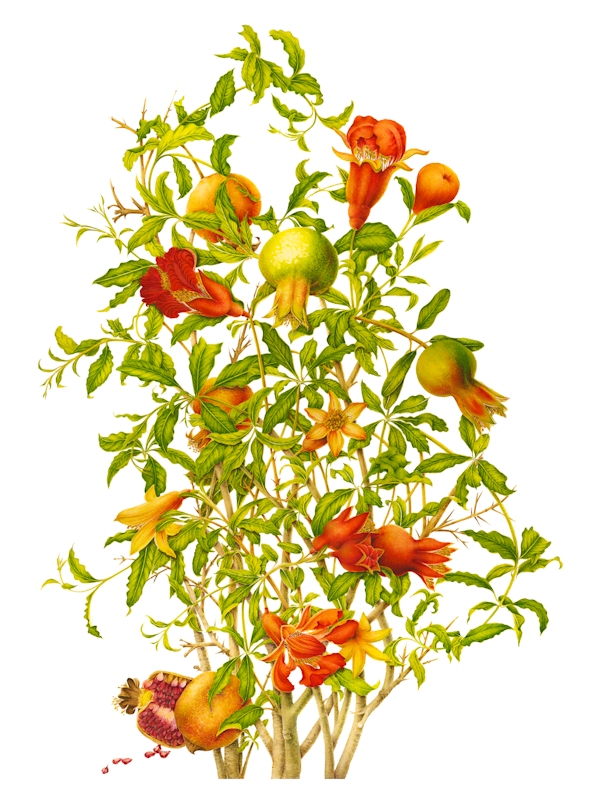
Prints available
2013

Prints available
2013

Nasturtium
2013
Prints available

Summer squash, var. sweet dumpling
14″ x 15½”, 2011
Prints available
A gaudy splash of yellow by the compost heap drew my notice one midsummer morning. I was recovering from a cranial aneurysm which had impaired vision in my left eye so I mystified by that flamboyant color. Upon investigation it proved to be a valiant cucurbita pepo. Thriving undisturbed with its brilliant chrome blossoms, springy tendrils, voluptuous young fruit, massive leaves—all attached to sturdy stems—it commanded me in no uncertain terms: You’ve GOTTA paint us! And dutifully I obeyed.
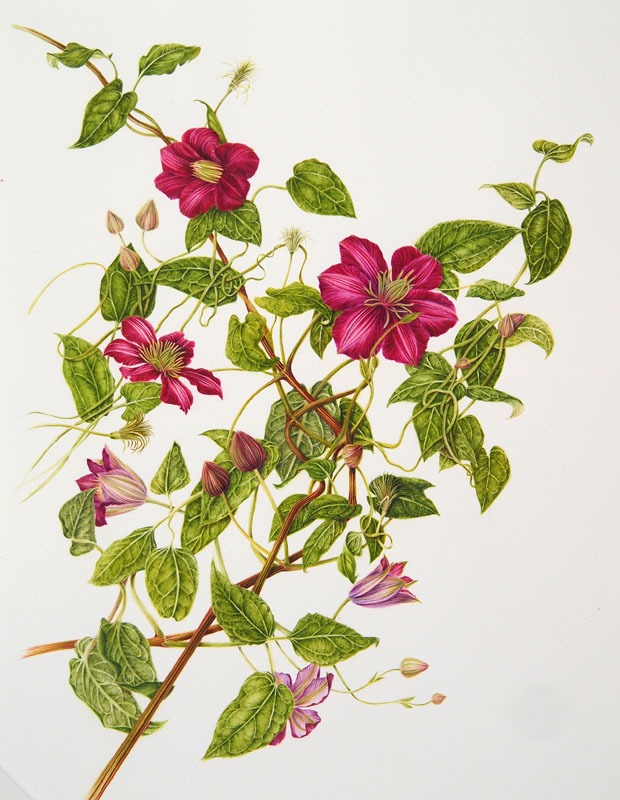
SOLD
Clematis var. Ville de Lyon
10″ x 13½”, 2011
Prints available

Tiger Lily
10″ x 19½”, 2011
Prints available
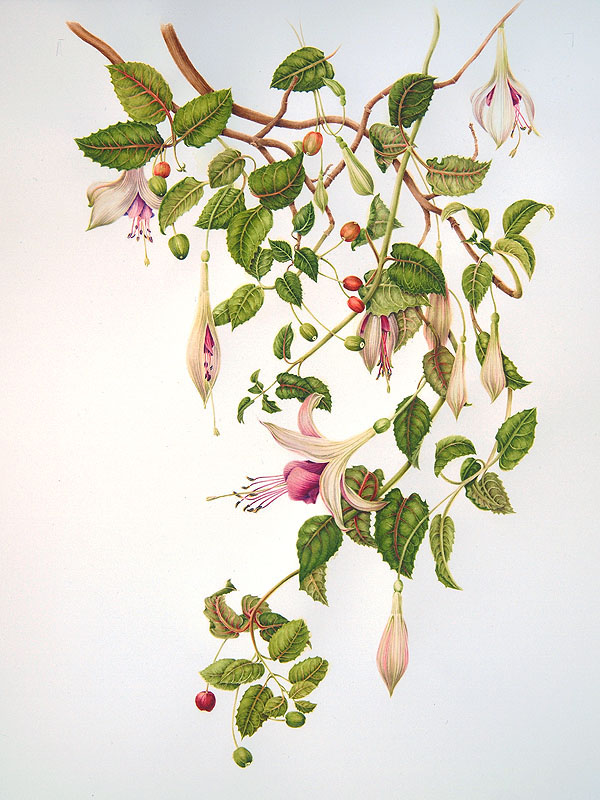
2011
Prints available

SOLD
2010
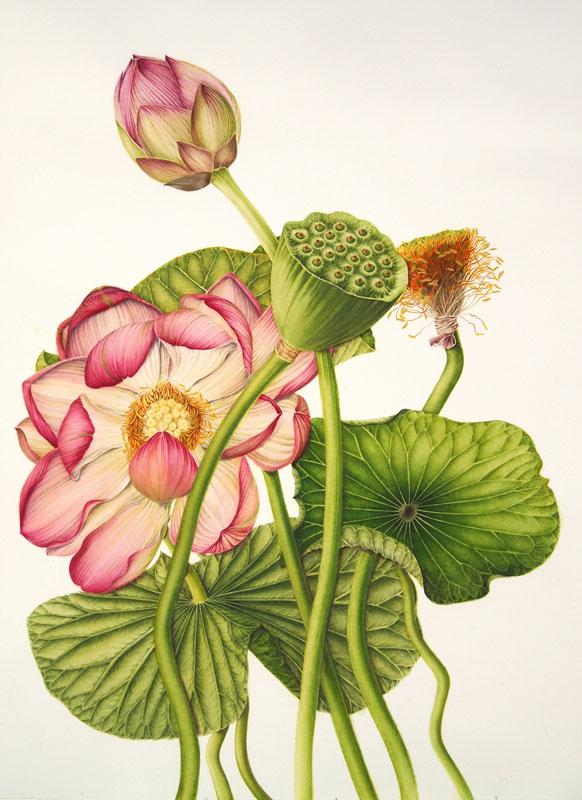
2010
Prints available
Nelumbo nucifera is commonly known as the lotus. The genus name is derived from the Sinhalese word Nelum (which means blue); species name from the Latin for nut-bearing (nux = nut, fera = bearing).
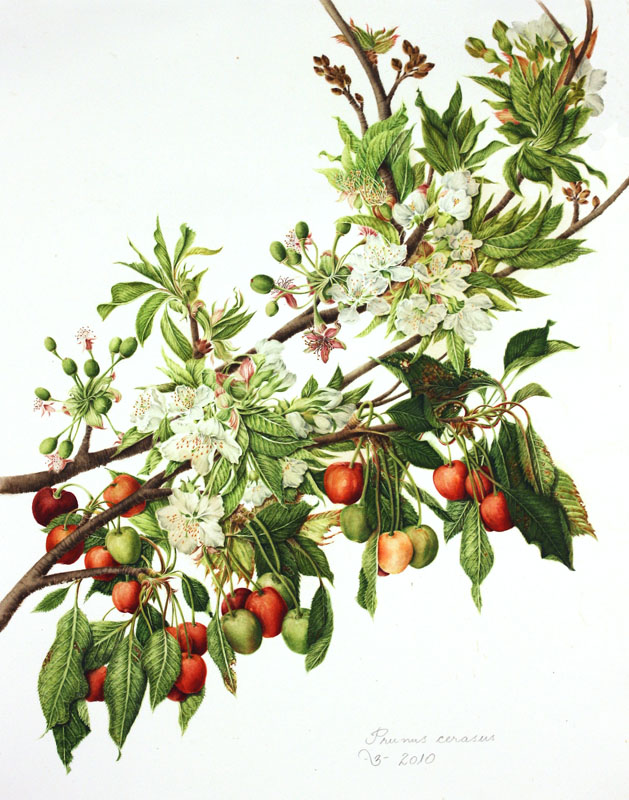
SOLD
2010
Prints available
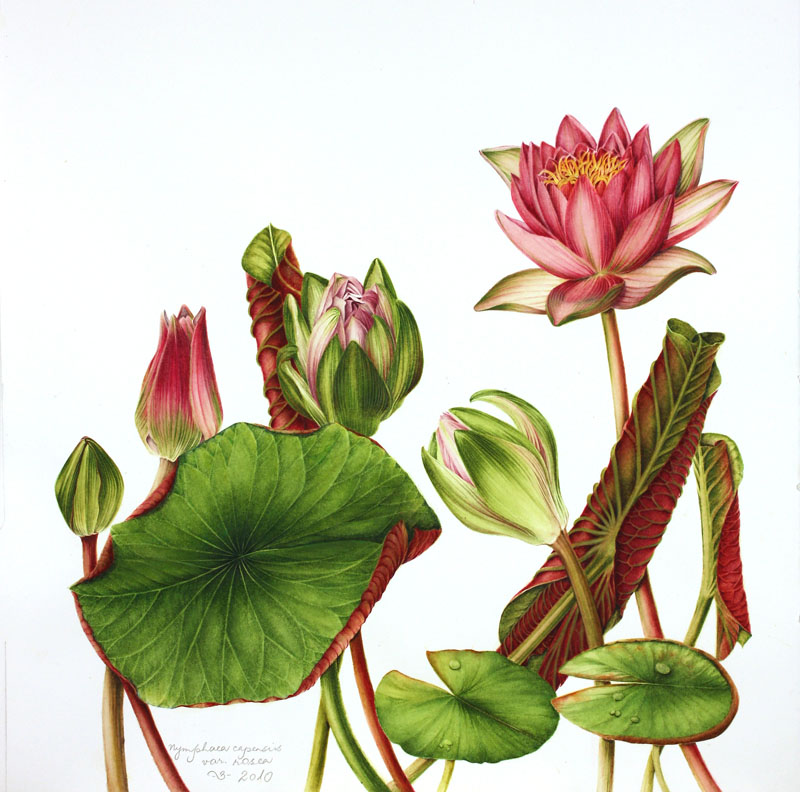
SOLD
2010
Prints available
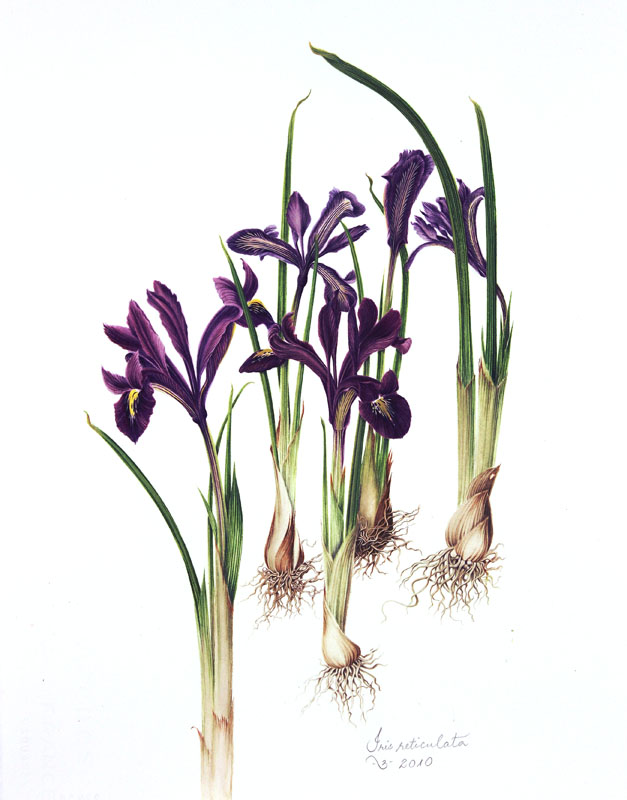
2010
The genus name derives from the Greek word for rainbow; and the species name comes from the Latin “rete”, meaning net and referring to the netted or reticulated pattern on the dry bulbs of the dwarf iris. In Greek mythology Iris, the messenger of the gods, is represented by the rainbow, which forms a bridge between the heavens and earth.

SOLD
2010
Prints available
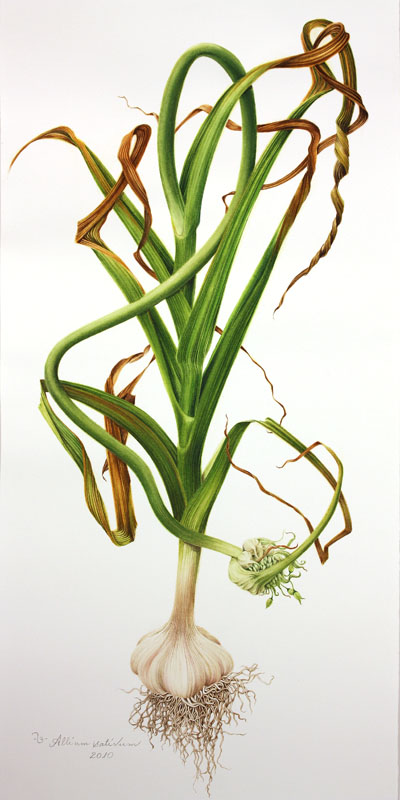
Garlic with scape & bulbil
2010
The genus Allium, from the Latin for garlic, includes several pungent bulbous plants—leeks, onions, chives. The garlic plant has a long folk history. Its use has been recorded in Vedic times, across cultures from ancient China to Egypt. It was believed to ward off diseases and infections and to confer strength. Garlic has had wide recognition for its fungicidal, germicidal, antiseptic and tonic uses wherever it is grown.
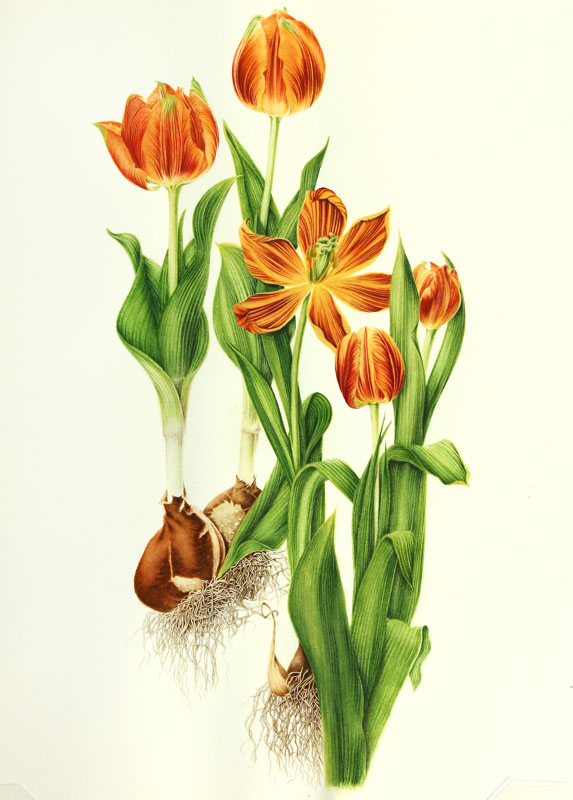
Prints available
Guess which wild flower native to Central Asia took western Europe by storm in the 17th century, built and collapsed fortunes, served as currency, led some to murder, others to suicide? None other than the tulip, of course!

SOLD
Prints available
The plant takes its name from digitus, the Latin word for finger and was so called long before official Linnean nomenclature was the practice. The common English name, foxglove, may have originated from folk’s (woodland folk or faeries) glove. The elongated bell-shaped flowers so easily fit the tip of a finger that their resemblance to a glove or a thimble is unmistakable. In Germany, the plant was called fingerhut or thimble; in Ireland Dead Man’s Thimbles; in Norwegian, Revbielde, meaning “Foxbell,” the only specific reference to fox.
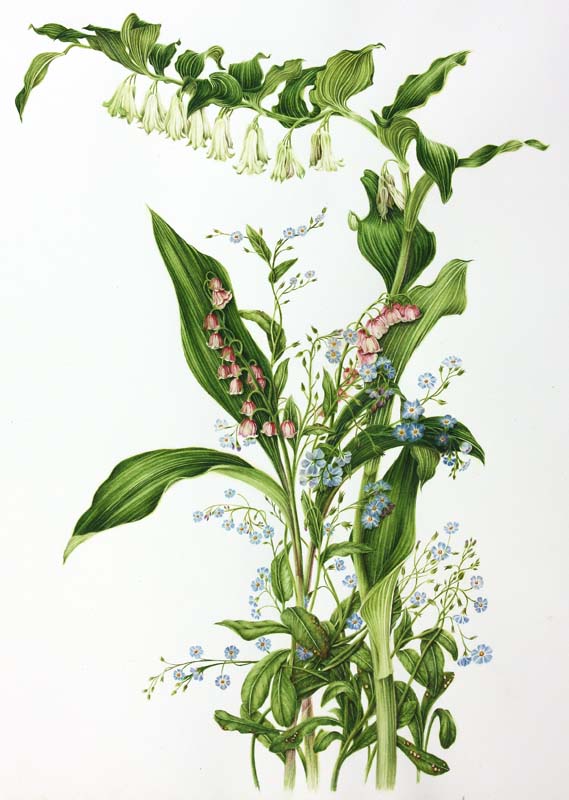
Convallaria majalis var. rosea (Pink Lily-of-the-Valley)
Myosotis scorpioides
Polygonatum commutatum
Prints available
From the Latin convallis for valley—a favored habitat for the plant—and majalis or belonging to May, this fragrant spring bloom derives its botanical name. Its other names are May Lily, Ladder-to-Heaven, Our Lady’s Tears but most popular of all is the lily-of-the-valley. Its flowers are usually white, although pale to darker pinks are less common but also popular.
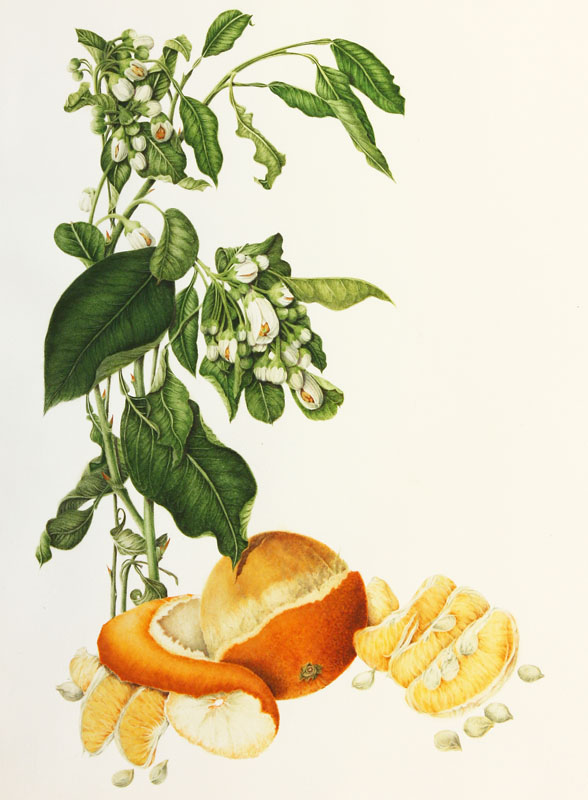
Valencia orange
Prints available
Mention “orange” and you instantly conjure up a host of associations—brilliant colors, a fresh, clean scent and a juicy explosion of tart, sweet, tangy flavors.
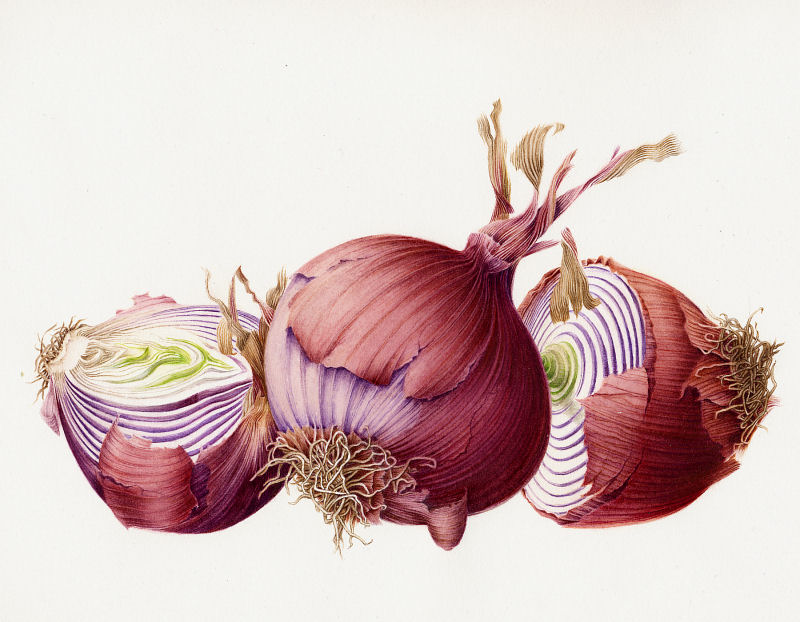
SOLD
Prints available
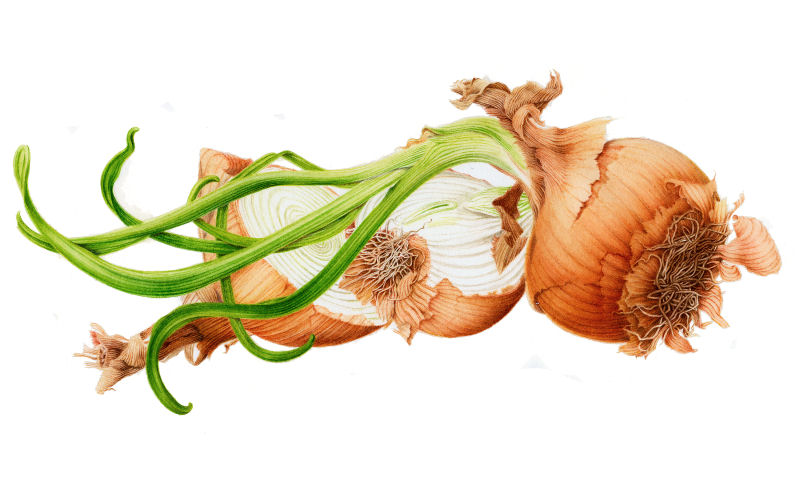
The genus Allium, from the Latin for garlic, includes several pungent bulbous plants, commonly called onion. Allium cepa is also known as the “garden onion” or “bulb” onion, related to wild species found in Central Asia.

SOLD
2005
Prints available
Hollyhocks evoke within me a deep nostalgia for the balmy sunlit winter gardens of my childhood in northern India. Their spires enclosed a sequestered nook, towering protectively over the riot of color provided by larkspur and cosmos, salvia and cineraria, pansies, nasturtiums and candytuft in their orderly flowerbeds. Long, lazy afternoons were spent reading or playing scrabble while the dogs chased each other on the grass.
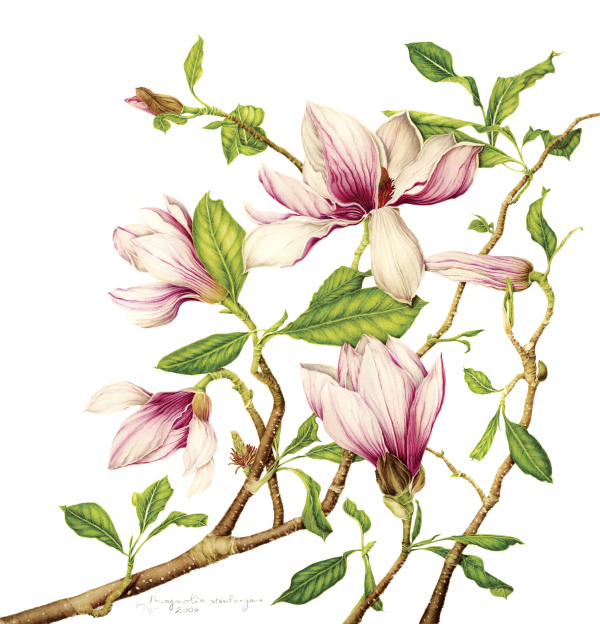
SOLD
2006
A magnolia tree grows by the entrance to my small house. The earliest proof of spring is a cloud of fragrant pink at my doorstep and the intoxicating scent wafting indooors. Later on glossy green leaves appear but only after dropping petals carpet the ground beneath.

SOLD
Prints available
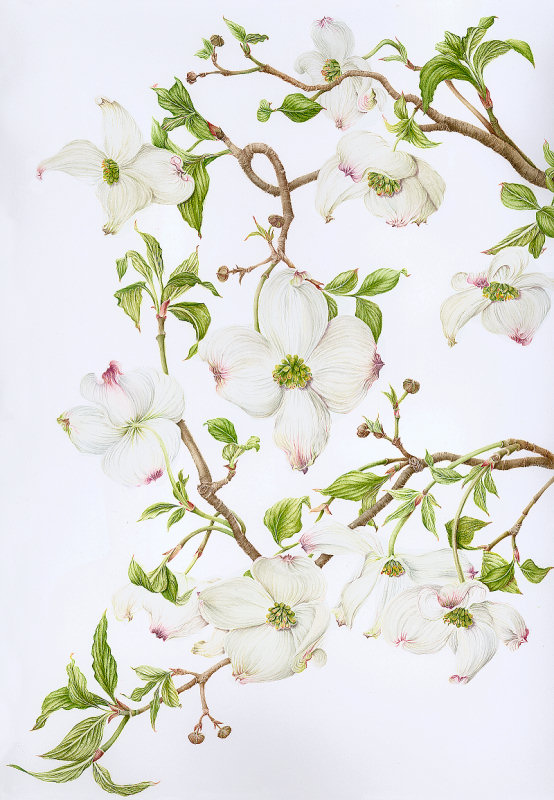
2008
Its name derives from the Latin corneus, meaning horn, for its hard, strong and shock resistant wood; and florida for its floral abundance early in the spring.
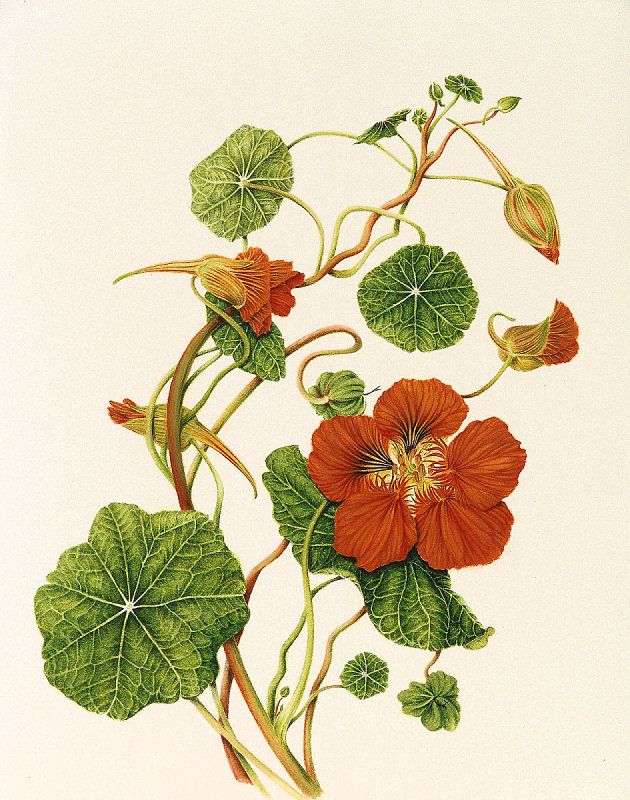
Nasturtium
To Linnaeus, the venerable giver of plant names, the broad circular leaves suggested battle-shields and the the flowers reminded him of helmets stained with blood. From the Latin for trophy, Tropaeolum, the plant derived its name. Its resemblace to the peppery taste and flavor of watercress, which actually belongs to the genus Nasturtium, Latin for pungency, led to its other name—Indian cress.

Chinese Wisteria
SOLD
Prints available
Originally called Glycinia, after the Greek “glykys” for sweet, renowned American naturalist Thomas Nuttall renamed the wisteria in the 1800s to honor Dr. Caspar Wistar (1761 – 1818), a professor of anatomy at the University of Pennsylvania, President of the American Philosophical Society, and a personal friend of Thomas Jefferson.
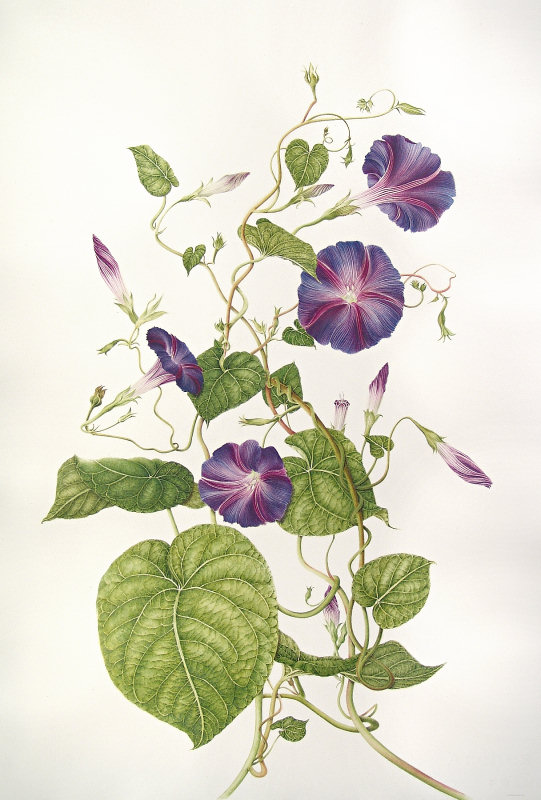
Morning Glory
SOLD
Prints available
Because the flowers open at night or in diffuse light and last only a single day, saluting the sun, the name is well-deserved—though quite a contrast to “worm-like”!

SOLD
Prints available

Bougainvillea was discovered by French botanist Philibert Commers on the coasts of Brazil, in the 1760’s. Commerson was was an avid collector of botanical specimens and sometimes called a lunatic and a magpie of exotic plants. Despite being a poor sailor he voyaged around the world in his botanical quest. In 1766 Louis-Antoine de Bougainville (1729-1811), lawyer, mathematician, and explorer, joined the French army to serve with Montcalm in Canada so that he would not have to follow his father’s profession of notary.

Red Hot Poker, Torch Lily, Tritoma
2008
Prints available
The plant’s original name Tritoma comes from the Greek for thrice-cut, a reference to their long leaves with very clearly defined three surfaces. Uva is Latin for bunch of grapes, describing the inflorescent arrangement of the blooms.
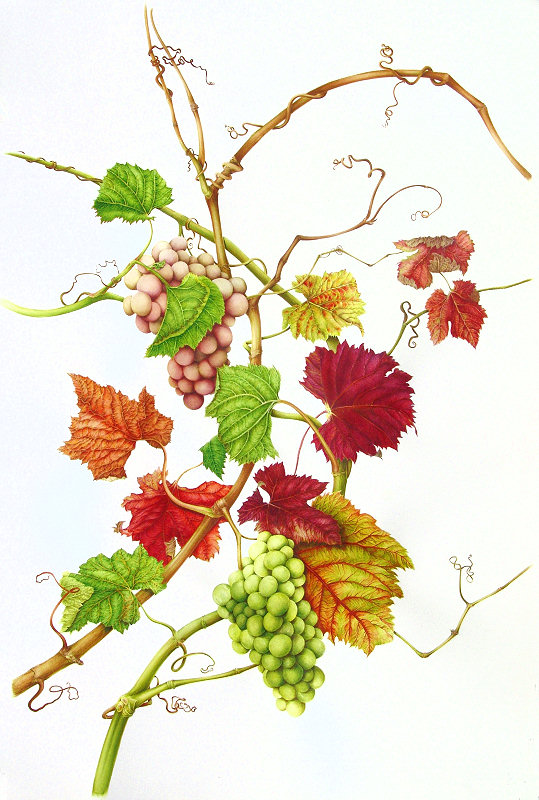
SOLD
Prints available
Wild grapes are found all over the world but viniculture probably originated in Mesopotamia, spreading to temperate zones in the west and north with well-drained soil. Ancient Egyptians, Greeks and Romans all treasured the grapevine, experimenting with and developing skills for wine-making. Ancient burial sites, most famously the tomb of Tutankhamun, housed several amphorae labeled with vintage, variety and the vintner’s name — testimony to the high esteem of both product and the skill of the artisan.
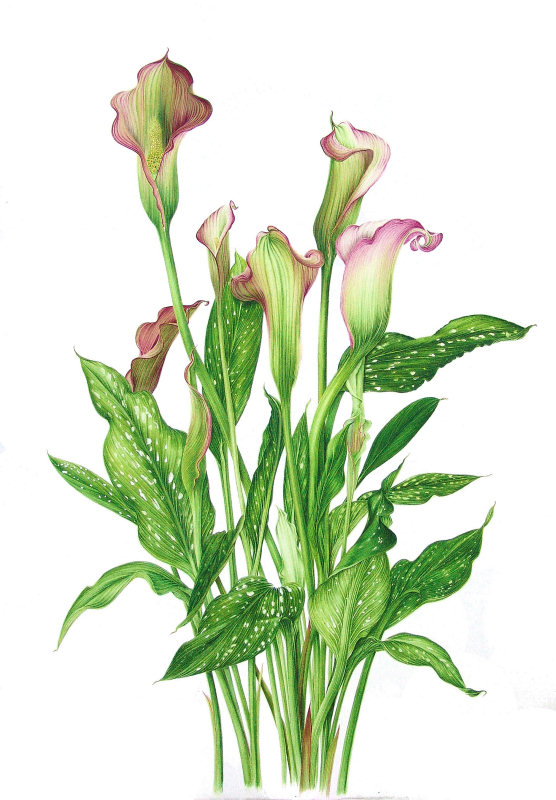
SOLD
2008
Oddly enough the Calla is not a member of the lily family. It belongs to the Araceae, and its common relatives are philodendron, aglaonema, caldium, anthurium, jack-in-the-pulpit.

SOLD
2007
Prints available
On a mid-May morning in my unkempt garden a brilliant burst of red struggled free from fuzzy green confines, like a crumpled chiffon dress out of a tightly packed valise. The creased item flared its skirts flamenco-style, forcing my paints and brushes to pay it homage.